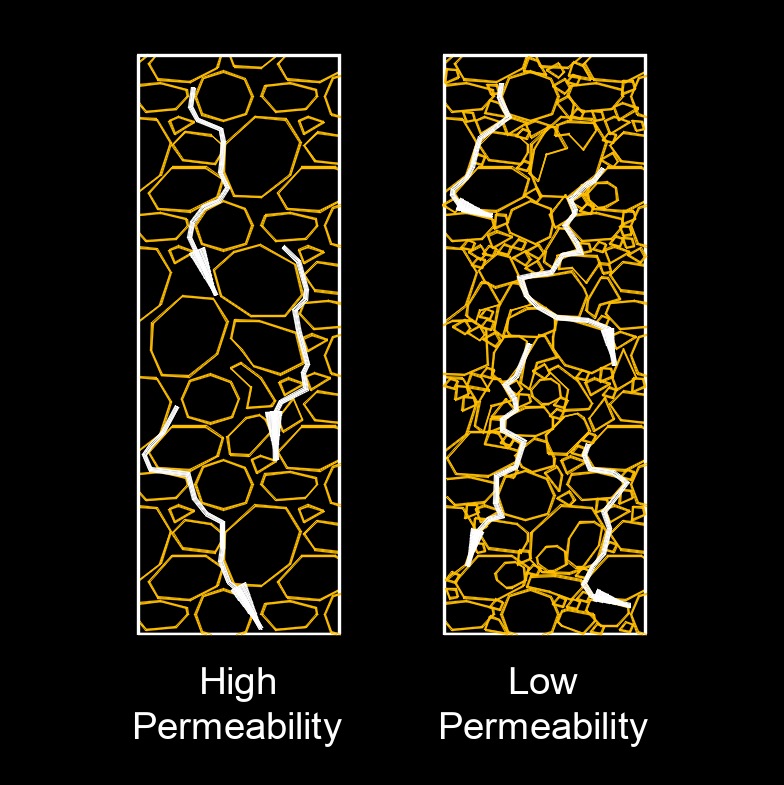Falling Head Permeability
Falling Head Permeability Formula |
||
| \( k \;=\; 2.303 \cdot \dfrac{ a_c \cdot l }{ A_c \cdot t } \cdot Log_{10} \cdot \dfrac{ h_s }{ h_e } \) | ||
| Symbol | English | Metric |
| \( k \) = Constant Head Permeability | \(ft^3\) | \(m^3\) |
| \( A_c \) = Sample Area Cross-section | \(ft^2\) | \(m^2\) |
| \( a_c \) = Standpipe Area Cross-section | \(ft^2\) | \(m^2\) |
| \( l \) = Sample Length | \(ft\) | \(m\) |
| \( t \) = Time Duration for Collection of Water | \(sec\) | \(s\) |
| \( V_w \) = Collected Volume of Water | \(ft^3\) | \(m^3\) |
| \( h_s \) = Water Level in Standpipe at Start of the Time | \(ft\) | \(m\) |
| \( h_e \) = Water Level in Standpipe at End of the Time | \(ft\) | \(m\) |
 Falling head permeability, abbreviated as \( k \), is a measure of the rate at which water can flow through a soil sample under the influence of gravity. It is used in soil mechanics and is particularly important in the field of geotechnical engineering. Permeability refers to the ability of a soil to transmit water through its void spaces, and it is a crucial factor in understanding the behavior of soils in various engineering applications, such as foundation design, slope stability analysis, and groundwater flow.
Falling head permeability, abbreviated as \( k \), is a measure of the rate at which water can flow through a soil sample under the influence of gravity. It is used in soil mechanics and is particularly important in the field of geotechnical engineering. Permeability refers to the ability of a soil to transmit water through its void spaces, and it is a crucial factor in understanding the behavior of soils in various engineering applications, such as foundation design, slope stability analysis, and groundwater flow.
Basic Overview of the Test Procedure
The falling head permeability test is suitable for soils with moderate to high permeability. For soils with low permeability, the constant head permeability test may be more appropriate. It's usefull for understanding how water moves through soil layers, which is essential for designing structures and managing water resources in geotechnical engineering projects. The falling head permeability test is one of the methods used to determine the permeability of a soil.
Sample Preparation - cylindrical soil sample is taken and prepared for testing. The sample should be representative of the soil in the field.
Setup - The soil sample is placed in a permeameter, which is a device designed for measuring permeability. The permeameter has a constant head water source at the top and a drainage outlet at the bottom.
Saturation - The soil sample is saturated with water to ensure that all void spaces are filled with water.
Constant Head Setup - Initially, the permeameter is filled with water, and the water level is maintained constant at the top of the soil sample.
Release - The water level at the top is then allowed to fall, and the time taken for the water level to drop a certain distance is recorded.
Data Analysis - Using the recorded data, the permeability of the soil can be calculated using Darcy's law. Darcy's law relates the flow of water through a porous medium to the hydraulic gradient and the coefficient of permeability of the soil.

